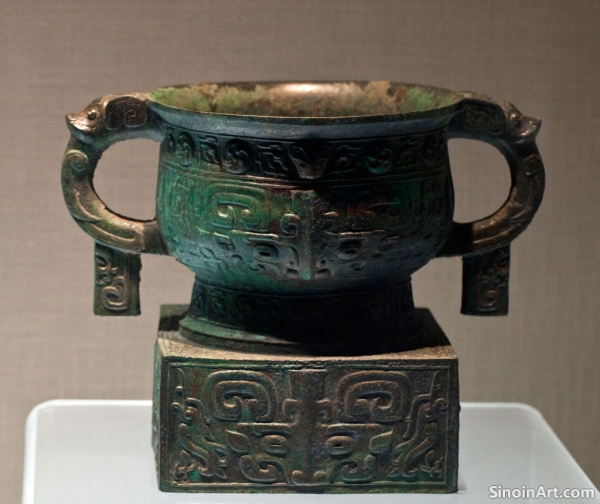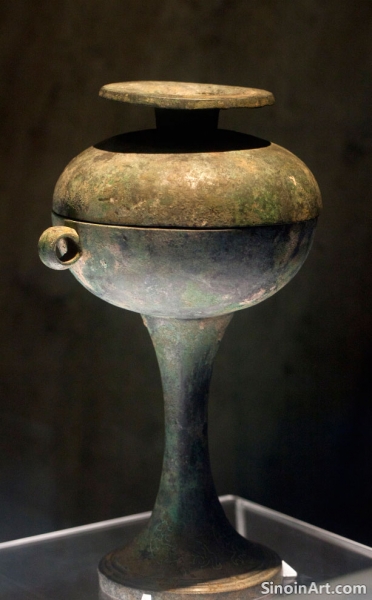The Use of Bronze in Ancient Chinese Ritual Practice: Beyond Vessels and Symbols
|
While bronze vessels and weapons are often seen as the primary forms of bronze use in ritual settings, bronze was also used to create a variety of other objects that were important to ancient Chinese ritual practices, each serving their own important purpose. The range of bronze objects, and their uses, reveals the complex and varied nature of ancient Chinese spiritual and religious life.  Bronze was used to create ritual implements, such as bells, chimes, and drums, which were used to produce music and sound that was believed to have special significance in communicating with spirits. These instruments were not only used to add music, but to generate specific sounds that held ritualistic meaning. The integration of music and ritual helped to set the tone for the ceremonies.  Bronze was also used to make ceremonial objects, such as masks, figurines, and decorative plaques, which served to create powerful visual impressions. The design of these pieces, which often included complex and highly symbolic designs, helped to create a compelling visual environment for ritual performances.  Bronze was used in the fabrication of ritualistic items such as mirrors, which were thought to have protective or spiritual powers. These bronze mirrors often served a double purpose of reflecting both physical forms and the spiritual aspects of the ritual performance. The study of bronze objects that go beyond the typical forms highlights the importance of this material in ancient Chinese ritual practices, emphasizing the rich and complex interactions between the material, the practical, and the spiritual. These objects all served vital purposes in the ancient world. |
Tag : bronze ritual, Chinese religious practice, ancient artifacts, ceremonial objects, spiritual beliefs
Related information
- Bronze Ware and Ancient Chinese Mythology: Exploring the Interplay Between Myth, Art, and Ritual
- The Symbolic Significance of Bronze in Ancient Chinese Power Structures: Ritual, Authority, and Legitimacy
- Bronze Ware and Ancient Chinese Astronomy: Decoding Celestial Patterns and Calendars
- The Preservation of Bronze Ware: Balancing Scientific Methods with Artistic Understanding
- The Role of Bronze Ware in Ancient Chinese Trade with Southeast Asia: Exchange of Goods and Cultural Ideas
This article explores the use of mythological imagery on Chinese bronze ware, highlighting the depiction of dragons, phoenixes, and other creatures, and how these motifs reflected ancient beliefs and helped to connect the earthly world with the spiritual realms.
This article explores the symbolic significance of bronze in ancient Chinese power structures, highlighting its role in ritual practices, its symbolism of authority and legitimacy, and its use by rulers to consolidate political control.
This article explores how bronze ware reflects ancient Chinese understandings of astronomy, highlighting the use of celestial patterns, depictions of constellations, and the connection between astronomical knowledge and ritual practices.
This article explores the preservation of Chinese bronze ware, highlighting the balancing act between scientific analysis and artistic understanding, the need for specialized techniques and ethical considerations, and also the need to provide access and ensure their long-term care.
This article explores the role of bronze ware in ancient Chinese trade with Southeast Asia, highlighting the exchange of goods, the spread of cultural ideas, and the impact on both economic and artistic development across the region.